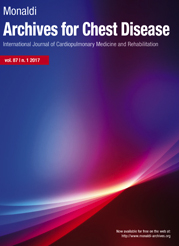Histopathological assessment of thymoma based on the World Health Organization 2021 classification with emphasis on transcapsular invasion: experience from a tertiary care center
All claims expressed in this article are solely those of the authors and do not necessarily represent those of their affiliated organizations, or those of the publisher, the editors and the reviewers. Any product that may be evaluated in this article or claim that may be made by its manufacturer is not guaranteed or endorsed by the publisher.
Authors
Histological classification and staging are crucial in the management and prognostication of thymoma. With different staging systems used, the significance of transcapsular invasion is debatable, especially in light of pathological tumor-node-metastasis (pTNM) staging (American Joint Committee on Cancer, 8th edition). The objective of this study was to analyze the histological subtypes, transcapsular invasion, and clinical outcome of thymoma with regard to the World Health Organization (WHO) 2021 classification. This retrospective study included all thymectomy specimens diagnosed as thymoma over a period of 10 years, from 2013 to 2023. Clinical details and histopathology slides were reviewed and histologically subtyped as per the WHO 2021 classification. Transcapsular invasion was assessed, and pTNM and modified Masoka staging were done. Descriptive statistics were used to summarize data. A total of 45 thymoma cases were identified; two with extensive infarction were excluded. The mean age was 46.5 years (range 25-68 years); in this study, there were 28 males and 15 females with a male-to-female ratio of 1.8:1. Myasthenia gravis was the presenting feature in 31 (72.9%) cases. B2 and B3 subtypes constituted half of the cases (22/43), with mixed patterns in 4 (9.3%). A total of 9 cases showed macroscopic invasion, 80% being the B3 subtype, and out of the 23 cases that showed transcapsular invasion, the three most common subtypes are listed here, with B3 being the most common, followed by AB and B2. Masaoka staging showed 11 (25.5%) stage I, 22 stage IIa (51.1), 6 stage IIb (13.9%), 1 stage III (2.3%), 2 stage IVa (4.6%), and 1 stage IVb (2.3%). Follow-up available in 38 out of 43 cases (range 4-127 months) showed recurrence in one case of the B3 subtype, stage IVb. None of the stage I and stage II (as per Masoka staging) patients had recurrence. The Masaoka stage is a widely used staging system where transcapsular invasion is an important parameter for upgrading stage I to stage II. However, in the present study, Masaoka stage I and II patients had no recurrence, questioning the significance of capsular invasion for staging. Accurate histological subtyping in thymoma is challenging but can be achieved by adherence to the morphological criteria of the WHO 2021 classification.
Ethics approval
Ethical approval was taken from the Institutional Ethics Committee, St Johns Medical College and Hospital, Bangalore (IEC study ref no 276/2023).How to Cite

This work is licensed under a Creative Commons Attribution-NonCommercial 4.0 International License.






